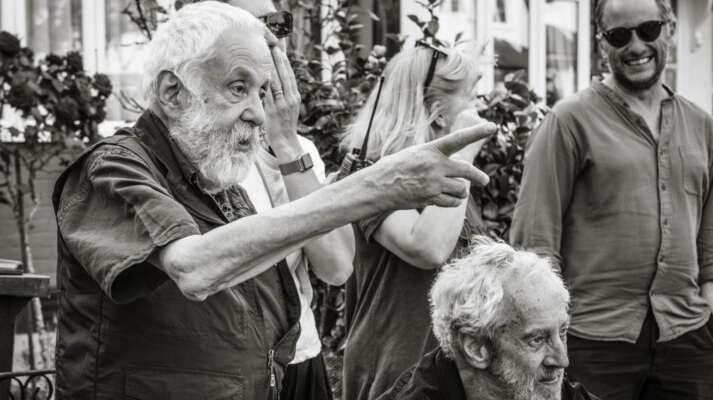The Aftermath of the 2008 Attacks on the Taj Mahal Hotel
A look at what happened after the terror attacks portrayed in Hotel Mumbai
The Aftermath of the 2008 Attacks on the Taj Mahal Hotel
Written by Peter Bowen
Anthony Maras' Hotel Mumbai recreates the events that transpired in Mumbai starting on November 26, 2008. A team of ten Jihadists hijacked a fishing vessel and sailed from Pakistan to Mumbai, where they carried out a series of brazen terror attacks across the Indian metropolis. Their ultimate target was the historic Taj Mahal Palace Hotel. For nearly three days, the hotel's guests and employees (portrayed by such actors as Dev Patel, Armie Hammer, Nazanin Boniadi, and Anupam Kher) banded together in an attempt to protect each other and evade from the ever-present danger of armed operatives roaming the hallways. When the smoke cleared, India was forever changed. In the days and years afterwards, the city and the nation sought to make sense of what occurred by identifying and bringing to justice those responsible.
On the morning of November 29, 2008, India's National Security Guard rooted out the last terrorist in the Taj Mahal Palace Hotel, effectively ending the siege that had held the city hostage. Over the three days, twelve sites, including the Chhatrapati Shivaji Terminus railway station, the popular Cafe Leopold, the Nariman House Jewish center, the Cama Hospital, and the Oberoi Hotel, the Trident Hotel, and Taj Mahal Palace Hotel, had been attacked. When it ended all but one of the terrorists were dead. Mohammed Ajmal Kasab, one of the two operatives who attacked the train station, had been captured as he attempted to flee from the police in a hijacked vehicle. He would be the crucial key to unlocking the mystery of who had perpetuated the attacks and why.
Over repeated interrogations during the next few weeks, Kasab provided both particular strategic details (identities of the other attackers, the routes they had followed, and how they armed themselves) and a picture of how their actions had been orchestrated by a larger terrorist organization. He revealed, for example, how Pakistani handlers, who monitored the team's progress through social media and televised reports, directed their every action via satellite phone. In his seven-page confession, Kasab identified Lashkar-e-Taiba, a terrorist organization in Pakistan committed to global Jihad, as the force behind the attacks. They had recruited Kasab, a petty criminal living on the streets, in a bazaar in the city of Rawalpindi. After weeks of rigorous training and religious indoctrination, Kasab was selected along with nine other recruits for a special mission. After his arrest, Kasab was charged with twelve criminal counts, including murder and waging war against India. In 2010, Kasab was convicted and sentenced to death. On November 21, nearly four years to the date after the attacks, he was hanged in India's Yerwada prison. He would prove to be one of the few people actually punished for the attacks.
Once Lashkar-e-Taiba was identified as the terrorist group behind the attacks, investigators started monitoring electronic communications with anyone involved with the organization to locate other responsible parties. On October 9, 2009, Pakistani American David Coleman Headley was arrested at Chicago's O'Hare Airport on suspicion of being involved. Under interrogation, Headley confessed his connection to Lashkar-e-Taiba and his role in organizing the attacks. In 1998, Headley had worked as an informant for the U.S. Drug Enforcement Administration after he'd been arrested for heroin smuggling. In 2002, he became radicalized after attending a Lashkar-e-Taiba training camp in Pakistan. Because his dual citizenship allowed him to travel freely in India, he was tasked with scouting out targets and strategizing a route. In order to avoid a harsher punishment, he gave up many of the key operatives involved, including Sajid Mir, who he claimed directly supervised the terrorists during the attack. On January 24, 2013, Headley was sentenced by the United States for a dozen federal terrorism crimes to 35 years. In July 2018, Headley was seriously injured during an attack at Chicago's Metropolitan Correctional Center.
Efforts to bring the leaders of Lashkar-e-Taiba to justice have become mired in judicial and diplomatic red tape over the years. In February 2009, Pakistan announced that seven of the suspected conspirators, including one of Lashkar-e-Taiba's main leaders Zaki-ur-Rehman Lakhvi, had been arrested. While Pakistan promised to bring these operatives to justice, none of them have gone to trial and Lakhvi was released on bail in 2015. Although a French court convicted Sajid Mir in absentia in 2007 for a bomb plot, he remains currently free in Pakistan with his location unknown.
On April 3, 2012, U.S. State Department offered a $10 million bounty for information leading to the arrest and conviction of Hafiz Saeed, one of the founders of Lashkar-e-Taiba and the man Headley claimed masterminded the attacks. While Saeed had been under house arrest in Pakistan, a court released Saeed in 2017. To this day, he remains free. On June 21, 2012, one of the terrorists' handlers, Sayed Zabiuddin Ansari (aka Abu Hamza), was arrested at the New Delhi airport. While he was sentenced to life imprisonment by the Indian government for an earlier arms case, his trial for crimes related to the 2008 Mumbai attacks remains ongoing.
A decade after the attacks in which six American were killed, Secretary of State Mike Pompeo renewed the United States' commitment to bring those responsible to justice. "It is an affront to the families of the victims that, after ten years, those who planned the Mumbai attack have still not been convicted for their involvement," Pompeo exclaimed in an official statement, adding that "the State Rewards for Justice (RFJ) Program is offering a new reward for up to $5 million for information leading to the arrest or conviction of any individual who was involved in planning or facilitating the 2008 Mumbai attack."


